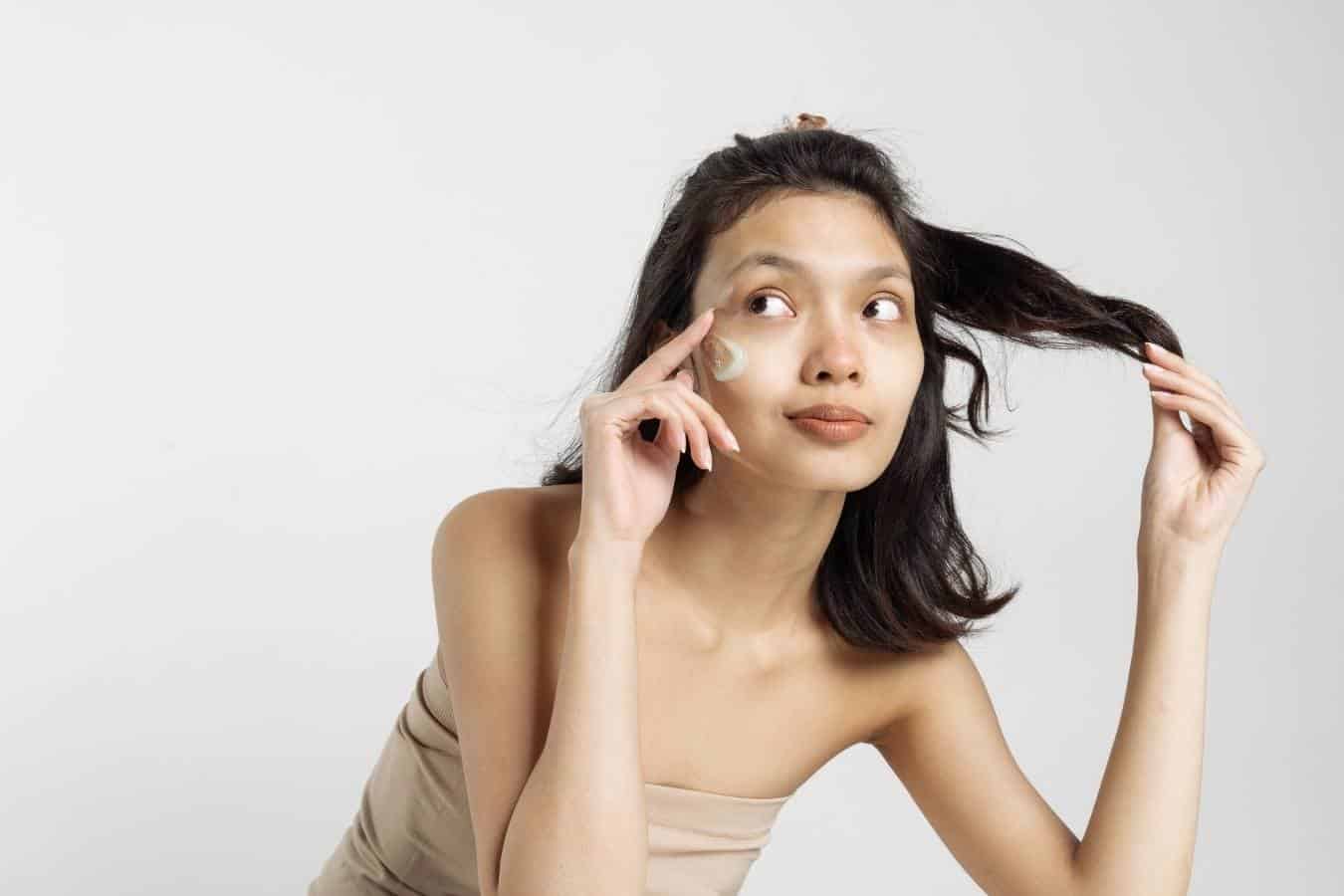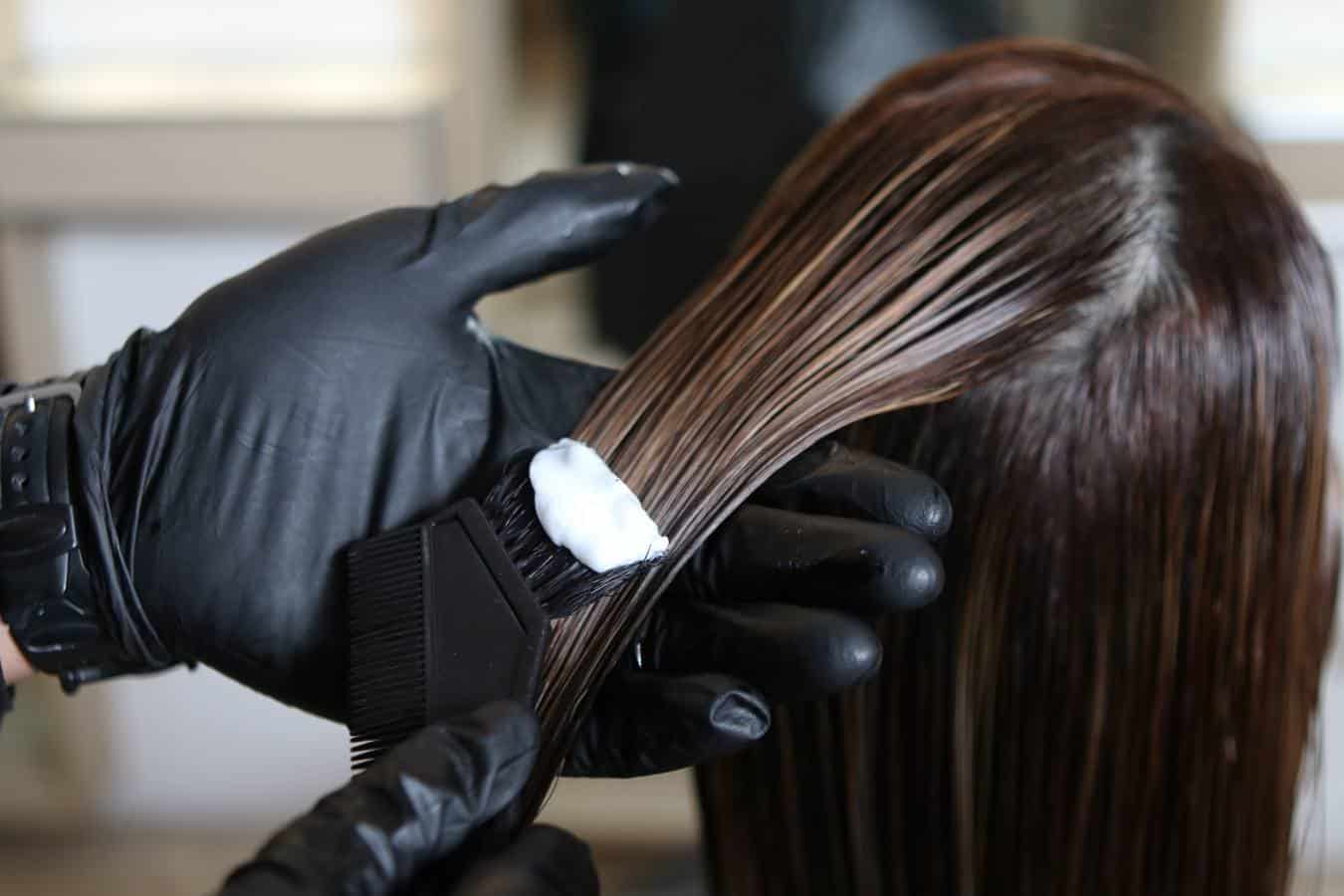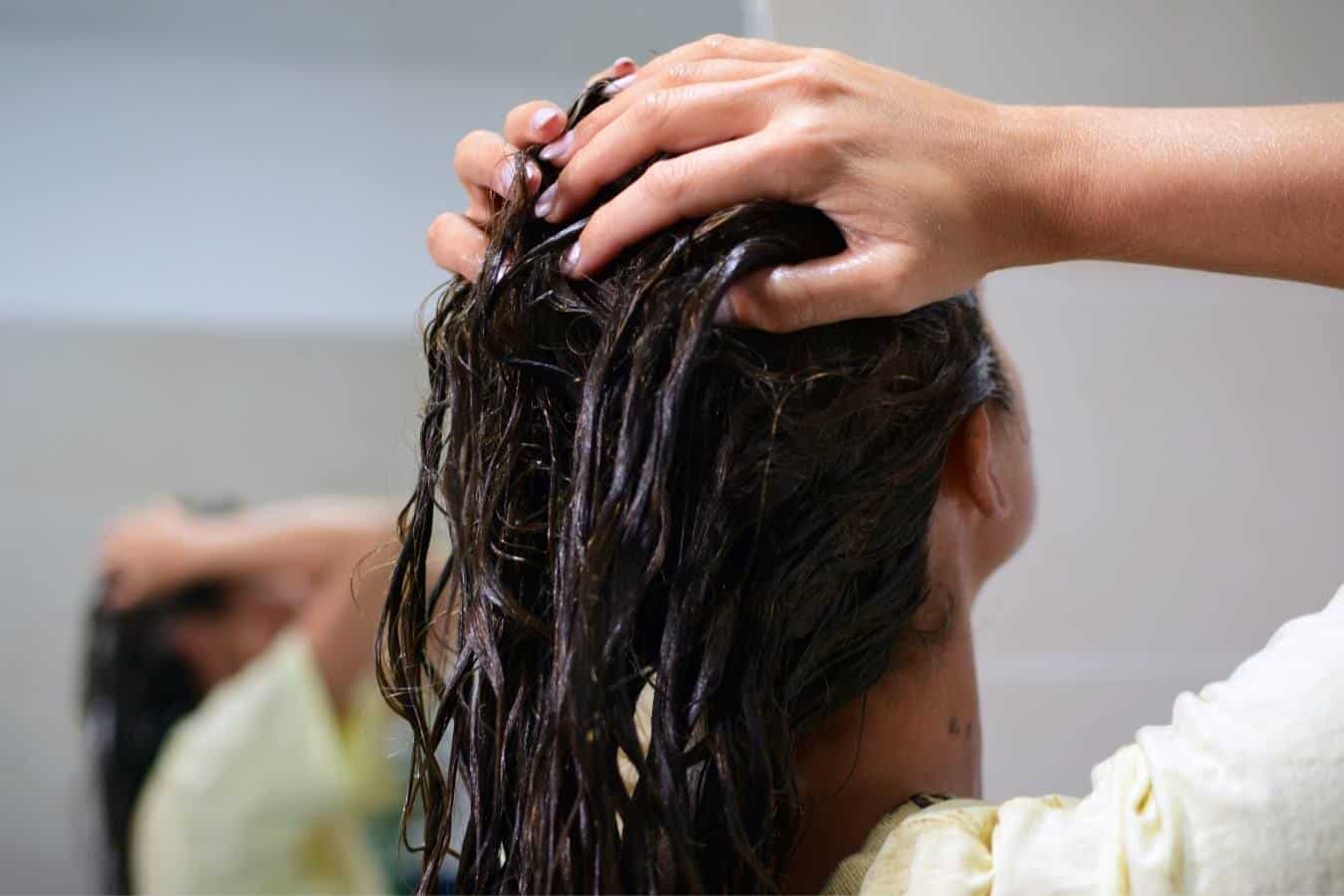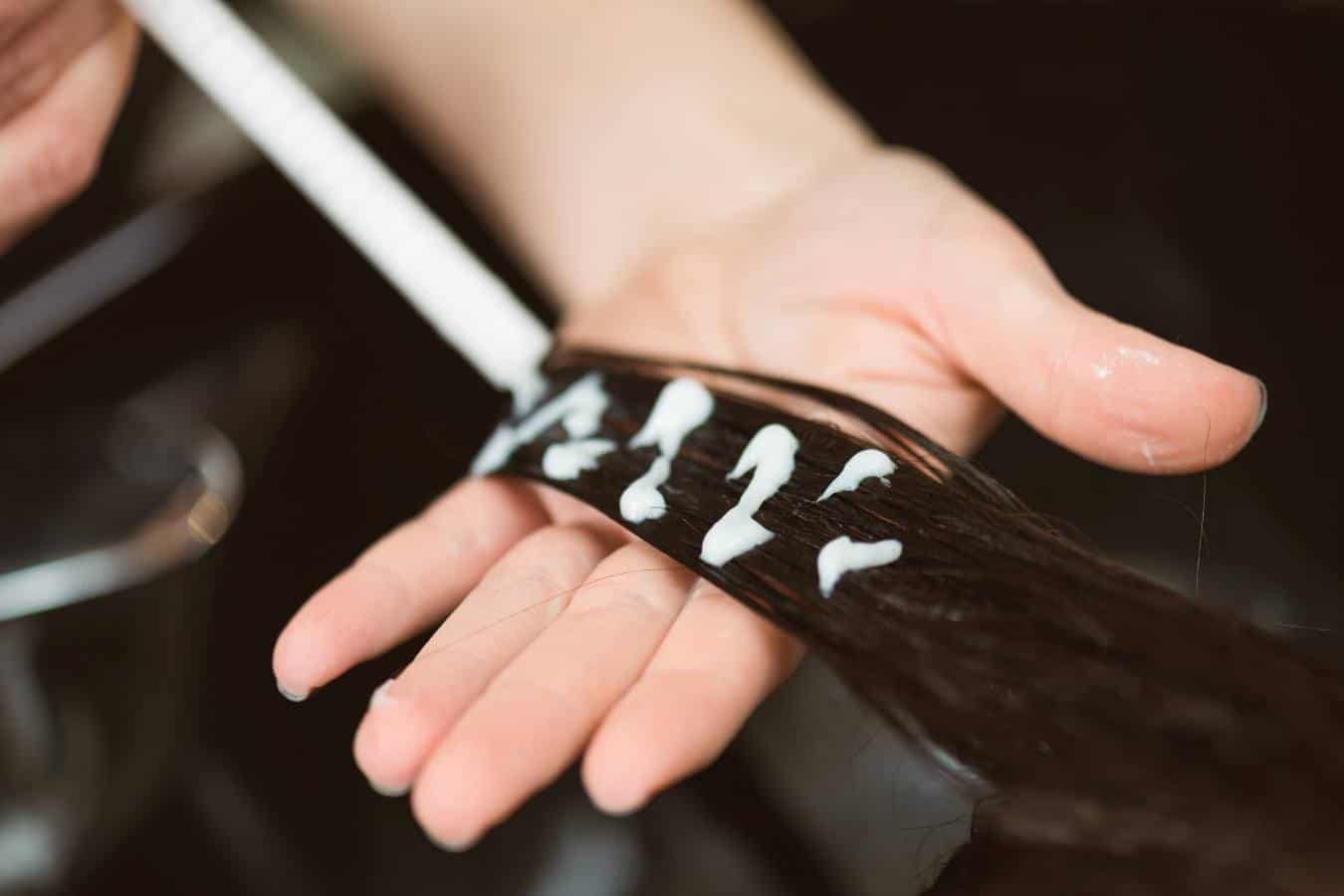Do you ever find yourself wondering why your hair seems oily after a keratin treatment? You’re not alone – it’s fairly common for people who’ve just had a keratin treatment to feel that their tresses seem a little greasy.

There are seven main reasons why hair becomes oily after a keratin treatment:
- Hair isn’t used to being washed less
- Hair type and texture
- Using shampoo with sulfates
- Using greasy conditioners
- Not brushing your hair
- Heat damage
- Wrong application of treatment
Read on to find out how to fix oily hair after your keratin treatment.
What Is A Keratin Treatment?
A keratin treatment is a procedure that straightens hair, thereby making it softer, straighter, less frizzy, and more manageable.
You’d typically head to a salon for a keratin treatment, as they can require the use of serious chemicals.
Your stylist will apply a mix of keratin – the protein of which hair is made up – to your locks.
This seals the hair cuticle, which is what makes hair less frizzy. The procedure usually takes anywhere from an hour to three hours and can last for three months.
Types Of Keratin Treatment
There are different kinds of keratin treatment, and different salons and stylists will offer a variety.
These are the main ones:
Brazilian Keratin Treatment
If your hair is super curly and very vulnerable to humidity, the Brazilian keratin treatment is for you.
It’s also typically free from formaldehyde, which some keratin treatments do inevitably need. It’s also amongst the most popular of keratin treatments.
Cezanne Keratin Treatment
The Cezanne treatment is one of the least invasive and intensive of any keratin treatment.
It’s free from formaldehyde and is best for those with fine hair who are keen to manage their frizz a bit more. It’s best avoided by those with colored hair.
Trisolla Keratin Treatment
This is one of the most intensive treatments and is suitable for those with thick, curly, or coarse hair.
It will soften curl texture and can be super long-lasting, as it’s one of the easiest treatments to maintain.
Soft Keratin
This will gently eliminate frizz, smoothing hair but maintaining curls. It works best on fine hair, and will usually last around two months.
This method is also great for those who want to continue to curl their hair after the keratin treatment.
Japzilian Keratin Treatment
It might sound like something from Godzilla, but this treatment combines Japanese and Brazilian techniques to straighten hair.
The procedure is by far the longest, but also tends to last longer.
Why Does My Hair Feel Oily After A Keratin Treatment?

There are a number of reasons why hair seems oily after a keratin treatment. It will vary from person to person depending on the treatment in question and the hair type and texture.
That said, these are some of the main reasons why your hair can seem oily after a keratin treatment:
Hair isn’t used to being washed less
Sebum is essential to the health of our scalp and hair. You actually need it – it creates a protective layer on the scalp that helps to minimize bacterial or fungal infection.
It also balances the scalp’s pH level and maintains the acid mantle.
When the pH level or acid mantle is impacted, your scalp may become dry, itchy, and sensitive.
Your scalp produces sebum in response to shampooing. When you get a keratin treatment, you have to leave your hair for longer between shampoos.
As a result, your scalp is still producing the amount of sebum that was necessary pre-keratin treatment, but you’re not cleansing this away as often.
Consequently, your scalp can appear oilier for the first two weeks or so after your treatment.
Your hair type and texture
Your hair’s type and texture, as well as the keratin treatment itself, will impact how long it takes for your hair to adjust to and absorb the keratin coating.
Low porosity hair – typically curly or coily strands – struggle to absorb product compared to hair with higher porosity, so the keratin treatment may take longer to absorb on this hair.
The keratin coating may feel like a greasy residue whilst it’s absorbing – it just needs time to do so properly.
You’re using shampoo with sulfates
Sulfates are serious grease-busters, but they’re very damaging to your scalp and strands. They break down the scalp’s pH balance and acid mantle, stripping any moisture.
Your scalp, therefore, overproduces sebum in order to compensate for this lost moisture, which can make your hair seem oilier.
If you also over-wash your hair in order to compensate for this grease, you’re going to get trapped in a vicious cycle.
You’re using greasy conditioners
If your conditioner is loaded with silicone, it might be too greasy for your keratin-treated hair.
You might need to look for a lighter one, as silicone can lead to the build-up of residue. Be sure that you’re also properly rinsing your conditioner from your hair, too.
You’re not brushing your hair
You may have heard that you shouldn’t brush your hair after a keratin treatment – but that’s a myth.
In fact, you should aim to use a boar bristle brush in order to gently loosen any dirt and build-up from your scalp.
It will also distribute the oils from your scalp throughout your strands, adding much-needed moisture.
You should just be gentle when brushing so as not to strip the keratin coating.
You’ve used heat
Do not use heat styling tools on your hair if you’ve just had a keratin treatment.
It will melt the keratin coating, which will then become residue in your hair that might lead to greasiness.
Your treatment was badly applied
If your keratin treatment is badly applied, it might lead to oily hair. You should apply it at least two inches away from the scalp.
Otherwise, your scalp will become irritated and will overproduce oil in order to try and soothe this.
It’s always best to go to a salon for a keratin treatment so that you’re receiving the best possible experience.
How To Get Rid Of Greasy Hair After Your Keratin Treatment

Thankfully, if your hair seems oily after a keratin treatment, there are things that you can do to help.
Don’t over-wash your hair
You should avoid washing your hair for at least three days after a keratin treatment, so as to allow the coating to settle.
But you should also try to minimize washing overall, as this will strip your natural oils and your scalp will overproduce sebum to compensate.
Use dry shampoo as an alternative, as this will relieve congestion and oil build-up. When you do wash your hair, avoid super-hot water as this will melt the keratin coating.
Avoid products with sulfates
Sulfates really are a death knell for your hair.
They’re industrial chemicals and can cause scalp irritation, which will result in the production of oil. Avoid products with sulfates at all costs.
You should also take care to ensure your haircare doesn’t contain salt, as this will dissolve the keratin coating and result in it building up.
Use a dry shampoo instead, or an all-natural product like Aleppo soap, which is made from ingredients like olive oil and laurel leaves, and is intensely purifying without stripping moisture.
Stop touching your hair
If you’re a hair toucher, you’re likely to be increasing your hair’s oiliness.
You’ll transfer oil from your fingertips to your strands, and you’ll also be stimulating the hair follicles to produce oil. Just don’t.
Use a boar bristle brush
The needles of boar bristle brushes are usually made of keratin, just like your own hair and the treatment itself.
Using these gently can help to loosen and distribute the oil from your roots throughout your strands.
It also might seem tempting, but you need to avoid using a clarifying or cleansing product on hair that’s had a keratin treatment.
Don’t use anything like an apple cider vinegar rinse, either – it will dissolve the keratin coating.
How To Care For Keratin Treated Hair

If you stick to the correct aftercare for keratin-treated hair, you’ll ensure the longevity of your treatment.
A keratin treatment is expensive, after all, so you want it to last as long as possible – it’s all about the maintenance.
Don’t over-wash your hair
You need to leave at least three days after the keratin treatment before you wash your hair.
This is to allow it to properly settle and will maximize its staying power.
Once you’re beyond this period, you should still try to reduce your shampooing. Aim for three times a week.
When you do shampoo, use products with minimal chemicals – no sulfates, chlorides, parabens, or phthalates.
These will cause build-up on your scalp which might result in greasiness – but they’re also just really bad for your hair and scalp health.
Use specialty haircare products
You can find hair care products designed for people who’ve had keratin treatments.
These will ensure your hair says frizz-free, soft, and more manageable for as long as possible.
They’ll also be formulated without the chemicals that can reduce the longevity of treatments.
Deep condition
After a keratin treatment, you want to avoid heavy oils like coconut or castor oil.
The keratin coating will prevent them from soaking into your strands, so they’ll sit on the surface, making them appear oily.
However, you should be aiming to deep condition after a keratin treatment.
You just want to be sure that you use products that contain predominantly water, as this is a humectant that attracts moisture to penetrate into your strands, reviving them from the inside out.
Your hair will look healthier and more hydrated overall, and you’ll also be prolonging your keratin treatment.
Don’t go swimming
Both chlorinated and salt water will play havoc with your keratin treatment.
Chlorine actually dissolves keratin, and the salt will affect its coating. Swimming is, therefore, best avoided.
Minimize blow-drying
If you’ve recently had a keratin treatment, styling tools that rely on heat aren’t your friend. Heat can impact the coating, causing it to build up and look greasy.
If you do blow-dry hair, use a heat protectant on your strands.
It would also be best to use a diffuser nozzle, as this will disperse the heat throughout your hair so as to minimize damage.
Don’t use clips or tie hair up
In the fifteen days following a keratin treatment, you need to leave your locks alone.
Using hair ties, clips, or bands will leave a mark or kink in the treatment, which can result in it looking streaky or uneven. Leave your hair alone for two weeks.
Sleep on a satin or silk pillowcase
Satin and silk pillowcases offer serious benefits to both your hair’s health and your skin’s.
It can help when you’ve had a keratin treatment, too, because there will be less friction between your hair strands and the satin or silk pillowcase.
This means the treatment will preserve for longer, and also results in less frizz and breakage.
It’s also less dehydrating for your strands, as silk or satin don’t suck moisture from your locks in the same way as thirsty cotton.
Disclaimer: This site is not intended to provide professional or medical advice. All of the content on LovedByCurls.com is for informational purposes only. All advice should be followed at your own discretion. Ingredients may change at any time so always check the product label before using. Check our full disclaimer policy here.
